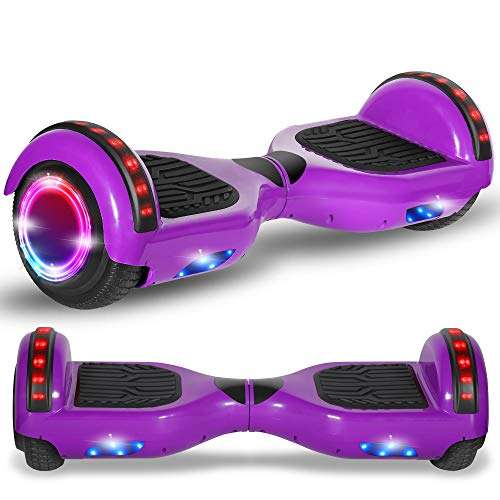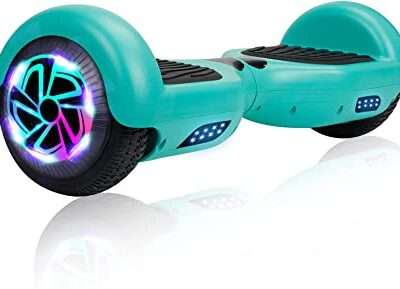There are more and more self-balancing scooters particularly appreciated by young people. Comfortable and practical, even for medium-length routes, they have limitations. Let’s see what the current legislation provides.
The micro- Hoverboards have achieved extraordinary results in recent years, a real “boom.” Among the various types of electric vehicles available is the Hoverboard, a means of transport made up of two sturdy rubber wheels connected to as many articulated platforms as possible. Propelling the Hoverboard is a group of sensors, including the gyroscope and other electronic components. The operation of this means of transport resembles that of a segway. Let’s see where they can circulate and with what limitations.
Hoverboard – what is it
A platform on two wheels that moves according to the movement of the weight of the driver’s body
Hoverboard: requirements to move
To avoid bans, they must not exceed 25 km/h and have a maximum power of 500 Watts.
Hoverboards: where they are allowed
Equated with bicycles, they can circulate freely on almost all types of roads.
Hoverboards: where they are not allowed
Access is prohibited on sidewalks, fast-flowing suburban roads, ring roads, and highways.
Hoverboard: the penalties
The violator can be called to pay fines of up to 800 euros plus the seizure of the vehicle.
Hoverboard – what is it
A hoverboard, also called a self-balancing electric scooter or self-balancing bicyclic board is a small means of transport consisting of two wheels with rubber tires connected to two jointed platforms, belonging to the category of vehicles that facilitate electric mobility.
A particular mechanical complex is installed inside it to receive and interpret the user’s commands, allowing you to keep your balance safely through continuous self-regulation during transport. The operation and technology are similar to a segway, with the difference that the Hoverboard does not have a handlebar or handle to rest your hands on.
Hoverboard: requirements to move
Since 2023, after the publication of the budget law in the Official Journal, scooters can move freely, equivalent to cyclists’ bicycles.
For segways, monowheels, and hoverboards, the Toninelli decree of 2019 limited itself to authorizing the experimentation procedure in the cities that would have approved it. Starting from July 2019, a year was granted to the Italian Municipalities to regulate the circulation of electric scooters and other “soft mobility” (i.e., segways, hoverboards, and monowheels).
The current situation provides that hoverboards, Segways, and monowheels must have specific requirements to be considered compliant and to be able to move freely in the areas where it is permitted: they cannot exceed 25 km/h and have a maximum power of 500 Watts. As for bicycles, to circulate safely even at night, they must be equipped with an acoustic signal, white front light, and red reflectors at the rear. In any case, the protective helmet is mandatory for minors, and at night it is necessary to wear a reflective jacket.
It is always forbidden to carry passengers. It is not mandatory to be insured, but it is certainly good practice to take out a civil liability policy to cover accidental damage to things or people during use. No driving license is required.
Hoverboards and electric scooters can be defined as electric micro mopeds; therefore, under the provisions of the Ministerial Decree of 31 January 2003 transposing Directive 2002/24/EC, two or three-wheeled motor vehicles having a maximum speed – for construction – exceeding 6 km/h, which are not pedal-assisted cycles, nor built for use by children or the disabled, are to be included according to the performance and construction characteristics between mopeds or motor vehicles. Therefore they require a certificate of circulation.
Therefore, if hoverboards exceed the maximum speed of 6 km/h, they must be approved. If, on the other hand, the full power of the engine does not exceed 0.5 kW and if the top speed reached is 6 km/h, they are considered by the Highway Code as “cars for use by children”; therefore, in this case, they can circulate without causing disturbance to pedestrians.
Under these conditions, the Hoverboard is equated to velocipedes or, more simply, bicycles. It, therefore, shares the circumstance of not being subject to the requirements regarding homologation, approval, registration, registration, and insurance coverage.
Hoverboards: where they are allowed
Hoverboards can circulate freely on cycle paths and any road, including private streets, courtyards, private spaces, and parks, such as bicycles. Same rules as for bikes also for parking: parking is allowed only in areas reserved for bikes (such as racks) and in those for scooters so that they do not hinder the transit of vehicles on the roadway.
Hoverboards: where they are not allowed
The ban on the use of hoverboards extends to sidewalks, fast-flowing, ring roads, and highways to avoid creating dangerous situations and accidents. They can only be used in spaces reserved for pedestrians. Violators can be stopped and fined by the police.




